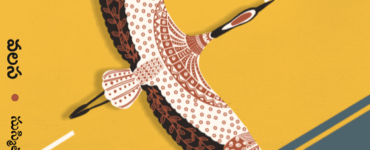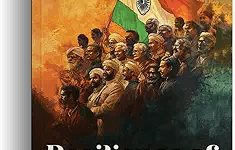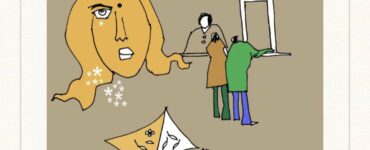As the lockdown set in, work went into the online mode. That was when I, like many others, began to learn about various platforms to use that have since become common. My students and I started looking for ones that would be comfortable to all of us. Yes, there were difficulties and glitches; however, we needed to stay connected. As things went on, we soon realised that we could use online platforms to engage in academic and other discussions as well, for meetings and the like. Soon enough webinars became the order of the day. I became part of many, organizing some, speaking at some, just logging in to listen at others. I was asked by a group of young students and research scholars who had formed a collective, they called themselves Calcutta Comparatists 1919 and began organizing a series of online talks. One evening I got a call from them asking me to speak at one of their events. The young research scholar from Kolkata, who called me on their behalf, insisted that I speak on Telugu Literature. I tried convincing her that I was not the right choice for this but then she was insistent. That is when I decided to go back to Kanyasulkam once again and speak on it for this series of lectures.
First staged in 1892 in Vizianagaram, Andhra Pradesh, Kanyasulkam written by Gurajada Venkata Appa Rao is considered to be the greatest modern work in Telugu literature. The play, written to criticize the evils of child marriage and to further the cause of widow remarriage, has wonderful elements of humour, biting social commentary, parody, and masquerade. The plot revolves around a clever young man, Girisam; a prostitute, Madhuravani; a young widow, Bucchamma, and an old man who wants to buy a very young girl as his wife by paying the ‘bride price’, kanyasulkam. Kanyasulkam deals with this practice of young girls being married off to older men in lieu of money. The old husband would die much early and the young widow would have to endure a state of widowhood. The play also brings in the nautch question that was being debated at the end of the nineteenth century – the condition of dancing girls who enjoyed royal patronage and who, later on, were reduced to the status of prostitutes. Kanyasulkam also brings in the reference to the various attitudes to English education prevalent at the time.
Gurajada Venkata Appa Rao (1862-1915), a pioneer of modernism in Telugu literature, was one of the earliest to part ways with classical traditions in Telugu poetry, drama, and prose. He was also responsible, along with his close associates Gidugu Rama Murty and Kandukuri Veeresalingam Pantulu for what is now known as “vyavaharika bhasha vadam” (the argument in favour of the use of spoken Telugu as the language used in literary works). He wrote the first modern poem, the first modern short story, the first social prose play, and was the first to compile his complete works in Telugu. Kanyasulkam has several firsts to its credit – it was the first social play in Telugu, the first full-length play in prose and the first to employ colloquial Telugu. The first edition of the play was published in 1897 and was a great success. Gurajada revised the play in 1909. The play has been translated into English – S N Jayanthi’s translation was published in 1964, an abridged translation by S. G. Murthy and K. Ramesh was published by the Sahitya Akademi in 1976, there is one by C. Vijaysree and T. Vijay Kumar (2002) and a another by Velcheru Narayana Rao (2007). For Telugu readers, Kanyasulkam is not just a literary work. Words and phrases from the play have now become part of Telugu popular culture along with characters from the play, their expressions and mannerisms.
The play was made into a popular film in 1955 starring NTR and Savitri in the lead roles, a film that I watched years ago on a visit to Ammamma’s place in Kakinada, Andhra Pradesh. Amma and Appagaru were avid readers. I recall Telugu books and magazines reaching our home in Calcutta by post on a regular basis. Those were days when it was not easy to get hold of Telugu books in Calcutta. Telugu newspapers reached the city two days later. My parents looked forward to the arrival of Telugu books and magazines. Discussions on them happened often and was so much a part of their regular conversations. As I child I remember catching snippets of their conversation. One such work was Kanyasulkam, a play I knew the story about as a kid and one that I read much later. I went back to Kanyasulkam after a long time to prepare for my talk with a sense of nostalgia and so much more that the play brings along.
*









I was going through this book for some othe purpose with the same gusto which I experienced when I read it earlier ( more than once). However, I was reading another book which throws a different light on some parts of the book. This book is అతడు-ఆమె by Dr Uppala Lakshmana Rao. (P276).
Goes like this,” బుచ్చమ్మ అంటే మానవ సమాజమే. ఈ మానవ సమాజం ఈ వేళటి పీడిత సమాజమే….” మీకు ఈ పుస్తకం దొరకక పోతే ఇంకొంచెం వివరం ఇస్తాను. చెప్పొద్దూ..ఈ విధంగా నేను బుచ్చమ్మ పాత్రను చూడలేదు. ఎన్ని సార్లు చదివినా.